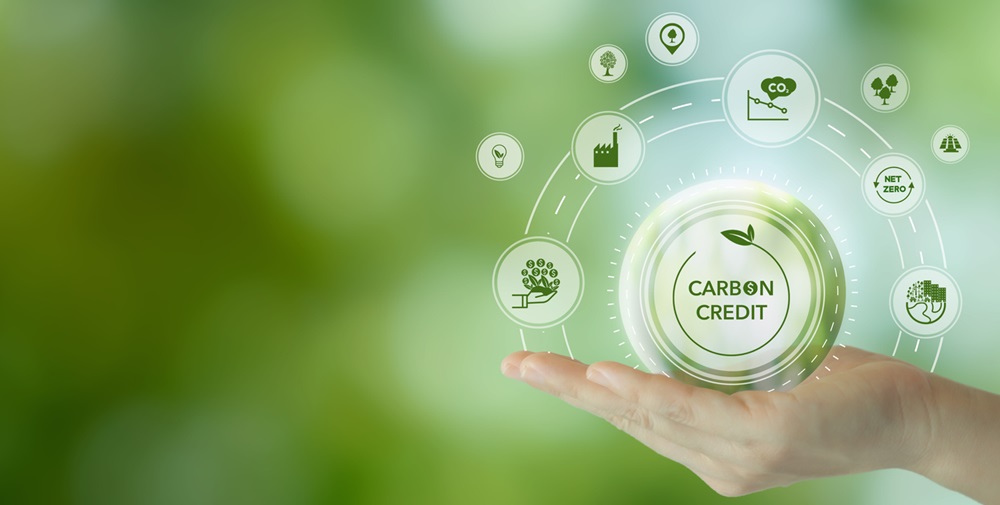Portugal has approved the Voluntary Carbon Market regime

We analyse the new Voluntary Carbon Market regime and the rules for its functioning in 10 questions.
On January the 5th 2024, Decree-Law no. 4/2024 was published in the Official Gazette, establishing the Voluntary Carbon Market and setting out the rules for its operation. This regime establishes the legal framework for emission offsetting actions and contributions to climate action by organisations and individuals wishing to carry out these actions as part of their climate action objectives and strategies.
1. What does this decree-law establish?
Decree-Law no. 4/2024 of 5 January (DL no. 4/2024) establishes the voluntary carbon market (VCM) and sets out its respective operating regime.
The VCM regulates greenhouse gas (GHG) emission reduction projects, as well as carbon capture projects, developed in Portugal, which promote the mitigation of GHG emissions. These projects are subject to eligibility criteria, emissions accounting, monitoring, reporting and verification measures set by an independent organisation.
2. What are the components of the voluntary carbon market?
The VCM comprises namely: (i) GHG emission mitigation projects; (ii) a system for certifying projects and their respective credits; (iii) a platform for registering GHG emission mitigation projects and carbon credits (Platform); and (iv) carbon market agents (i.e. GHG emission mitigation project promoters, individuals and organisations, private or public, that acquire or use carbon credits, as well as the entities responsible for certification).
3. What are carbon projects?
These are projects that promote the reduction of GHG emissions or the implementation of carbon capture projects, in compliance with the eligibility criteria and the established carbon methodologies.
Forest carbon sequestration project types that contribute to the conservation of natural capital, as well as building a more adapted and resilient landscape, namely reducing vulnerability to fires, are prioritised in the VCM.
Projects submitted to the VCM cannot be submitted to other similar market systems, either nationally or internationally.
4. What are carbon credits?
Carbon credits are generated by reductions in GHG emissions or carbon capture, obtained through projects under the VCM. Each carbon credit corresponds to one tonne of CO2e.
Carbon credits can take the form of:
- Future carbon credits: these are credits issued prior to a reduction in GHG emissions or the implementation of the carbon capture project, based on an estimate submitted by the project promoter and validated by an independent verifier.
- Verified carbon credits: these are credits issued after a reduction in GHG emissions or carbon capture resulting from the projects, verified by an independent verifier.
Credits are tradable and credit flows between market agents are recorded on the Platform. The Credits are valid for an indefinite period, unless cancelled.
Carbon credits from projects that incorporate significant additional benefits in terms of biodiversity and natural capital can be identified in the register as Carbon Credits +.
5. How are carbon credits registered?
Projects and carbon credits are registered and issued through the Platform, which is electronic and contains information on carbon projects, credits issued, market agents, transactions and the status of credits.
The Platform is developed and managed by ADENE - Agência para a Energia, under the supervision of the Portuguese Environmental Agency - APA, I. P.
Carbon credits can be used through: (i) offsetting emissions, or (ii) contributions in favour of climate action.
The carbon credits issued belong to the project promoters until: (i) they are cancelled or (ii) their ownership is transferred to another market agent.
Carbon credits cannot be used or claimed for the purposes of complying with international or European obligations, such as for the purposes of: (i) EU Emissions Trading System; or (ii) offsetting and reducing international carbon emissions.
7. Can carbon credits be canceled?
Yes, carbon credits can be cancelled in the following situations:
- When the promoter carries out any action to offset emissions or contribution in favour of climate action.
- When necessary to compensate for a situation of reversal of captured emissions (see question 8 below).
Cancelling credits prevents them from being used twice.
Yes. However promoters of carbon capture projects must take all measures to avoid reversal situations.
Whenever there is a reversal of captured emissions, the promoter must cancel the credits issued by the project, as follows:
- When it is an intentional reversal, credits should be cancelled for an amount equivalent to double the reversal;
- In the event of an unintentional reversal, credits should be cancelled in the amount equivalent to the reversal.
In the event of point (ii) above, when the cancelled credits are not sufficient to cover the amount of the reversal, the promoter may resort to the guarantee bag (see question 9 below) or insurance in order to compensate for the credits already transacted and which are insufficient.
The reversal of emissions that may occur over the duration of the project has no impact on the carbon credits already issued that have been traded between the promoter and third parties.
The purpose of the guarantee bag is to safeguard against unintentional reversals of captured emissions. When the guarantee bag is activated, the Platform manager cancels its credits corresponding to the missing credits up to the amount equivalent to the reversal that has occurred
10. When does the VCM come into force?
This system came into force on 6 January 2024. However, the Platform is not yet operational.
Contacts


